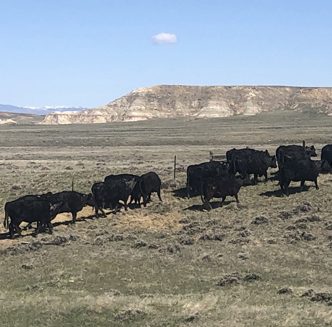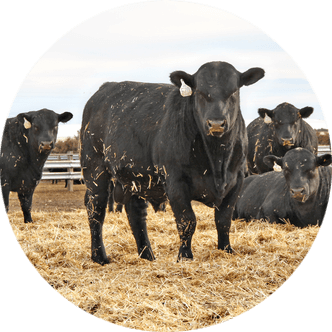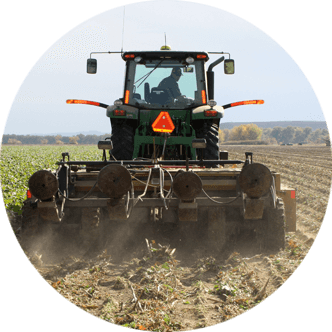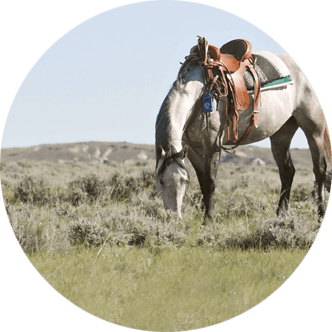NWS threat spurs USDA action
As the New World screwworm (NWS) continues its northward march, sounding alarm bells across the nation’s livestock industry, key players like the U.S. Department of Agriculture (USDA) and Texas A&M University (TAMU) are ramping up public education and prevention efforts.
While no detections have occurred in the U.S. to date, NWS has been confirmed most recently in Nuevo León, Mexico – less than 70 miles from the Texas border – marking the nearest report of the parasitic fly in decades.
Billion-dollar threat
Cochliomyia hominivorax – commonly referred to as NWS – is a tropical, metallic green-blue fly with large orange eyes, about twice the size of a common housefly.
NWS is not a biting fly. Instead, it causes damage to living, warm-blooded animals by depositing eggs into preexisting wounds – though it rarely affects birds.
NWS larvae feed on the living tissues of their hosts, burrowing or “screwing” into the animal’s tissue with their sharp mouth hooks – hence the fly’s namesake – causing significant damage. If wounds go untreated, infestations can result in infection which can be fatal.
According to an Oct. 13 Texas A&M AgriLife article by Communications Coordinator Kay Ledbetter, the fly previously posed a problem in the southern U.S. prior to its eradication in the 1960s.
“Effective eradication in the U.S. was accomplished in 1966, and by 1967, U.S. cases had fallen to fewer than 1,000 – a 99 percent reduction,” Ledbetter writes. “Incursions by the pest continued for several years, prompting a multinational coordinated eradication effort in the late 1960s to eradicate the fly to southern Mexico and later to the Darién Gap in Panama.”
Since then, North America has been considered NWS free, while infestations have been reported in Jamaica, Cuba and across South America.
Ledbetter notes an outbreak was also reported on southern Florida’s Big Pine Key in 2016, causing significant loss of male Key deer, which are considered endangered. Eradication was achieved the following year, but at great financial cost.
“Until 2023, the Darién Gap quarantine line held, with occasional incursions into areas west of the Panama Canal – about 25 occurrences per year. Since 2023, NWS has been reestablished north of the Panama Canal,” Ledbetter explains. “There have been 6,500-plus cases in 2024, and the screwworms have moved as far north as Veracruz, Mexico as of May but not yet into the U.S.”
However, most recently reported only 70 miles from the border in a strong northward advance, NWS has been of increasing concern to U.S. officials and producers alike.
According to TAMU data, reestablishment of NWS in the U.S. could cause potential damages exceeding $2.1 billion to the nation’s cattle industry and $9 billion to the hunting and wildlife sectors in Texas alone.
Border closures
In response to NWS detections earlier this year, USDA suspended imports of live cattle, horses and bison from Mexico in May to prevent further northward movement of the fly.
An Oct. 13 DTN article by Senior Livestock Editor Jennifer Carrico notes the border closure has had a ripple effect on the cattle industry on both sides of the border.
Carrico explains Texas feedyards – many of which rely heavily on Mexican cattle – are reporting sharp declines in capacity.
Mark Rogers, owner of Rogers and Sons, Ltd. Custom Cattle Feeders in Dimmitt, Texas, tells DTN imported cattle have historically made up 90 to 95 percent of his feedyard’s volume. Because of the border closure, he is now only running 70 percent of his facility’s capacity.
Mexican producers are also feeling the strain.
Omar Gonzalez, a cattle broker based in Chihuahua, Mexico, notes there is nowhere for Mexican cattle to go. Therefore, excess cattle and limited facilities are creating widespread challenges.
“It’s a real problem,” he tells DTN. “Farmers here are having to sell their cattle at half the price they typically would because there’s just nowhere to go. They are keeping cattle as long as they can in hopes some spots will open at feedyards.”
Carrico further notes the decrease of cattle coming into the U.S. affects all sectors of the industry, including truckers, employees at ports of entry and “those who help expedite getting cattle to the border on the Mexican side and to the feedyards on the U.S. side.”
New Response Playbook
Among a long list of measures taken in response to NWS, USDA’s most recent action was the release of the NWS Response Playbook on Oct. 17, which details how federal, state and local agencies will respond if the pest is detected in the U.S.
The plan outlines strategies for surveillance, outbreak management and containment, including how to coordinate communication with state officials, wildlife managers and livestock producers; how to reduce the spread of non-infested animals and prevent NWS from establishing in new areas; how to manage NWS on infested premises; how to maintain continuity of business and how to ensure the flow and management of information.
Created with input from state animal health officials and industry and veterinary organizations, USDA notes activities outlined in the playbook will “allow for a flexible, science-based approach and data-driven decisions to allow responders to plan, act and adapt across all phases of an outbreak.”
“USDA continues to execute our five-pronged plan to keep NWS out of the U.S.” says U.S. Secretary of Agriculture Brooke Rollins in the corresponding Oct. 17 press release. “We’re aggressively protecting the border, supporting eradication efforts in Mexico and ensuring domestic response plans are ready if needed.”
The draft playbook, which USDA describes as a “living, dynamic document,” is available on the NWS Foreign Animal Disease Preparedness and Response website.
USDA says it will continue to gather feedback from states and industry representatives to “ensure operational useability and alignment with field practices.”
Producers urged to stay alert
Additionally, USDA officials and other industry experts are urging producers – especially those in southern and central states – to remain vigilant.
Ledbetter reminds producers livestock, wildlife and pets can all be at risk, and signs of infestation include wounds which fail to heal, excessive drainage, maggots and/or foul odor.
“Historically, ranchers have altered breeding dates to avoid birthing during the fly season,” Ledbetter explains. “Common livestock management practices and events, such as castration, dehorning, branding and birthing in all animals, often result in infestations. Infestations can occur at the site of any recent wound like a scrape, lesion or even a tick-feeding site.”
“Other wounds of common infestation include those from ear tagging or shearing, as well as mucous membranes and antler shedding in deer. Newborn mammals are prone to infestations at the healing umbilical cord site,” she continues.
When it comes to control measures, typical insecticide has not proven as effective as it has with other insects due to NWS’s wide range of hosts and high occurrence in wildlife.
Experts note eradication has been the best way to control NWS, although removal of flies and larvae found on hosts is critical to reducing pest populations and animal suffering.
In the instance screwworm larvae are found in a wound, producers are required to contact a veterinarian, who is then mandated by law to collect samples and submit them to the USDA’s National Veterinary Services Laboratory for confirmation.
“Also, the animal should be immediately confined for wound care, and all larvae should be removed and placed in alcohol,” Ledbetter states. “After removing larvae, treat the infestation with topical pesticides labeled for use on the animal to kill any larvae which may not have been removed and reduce the likelihood of reinfestation. The wound should be monitored until it fully heals.”
“When dealing with livestock, all other animals in the herd should be checked for wounds and larvae. Anyone who finds fly larvae infesting a living animal must report it to a state veterinarian,” she concludes.
Hannah Bugas is the managing editor of the Wyoming Livestock Roundup. Send comments on this article to roundup@wylr.net.





